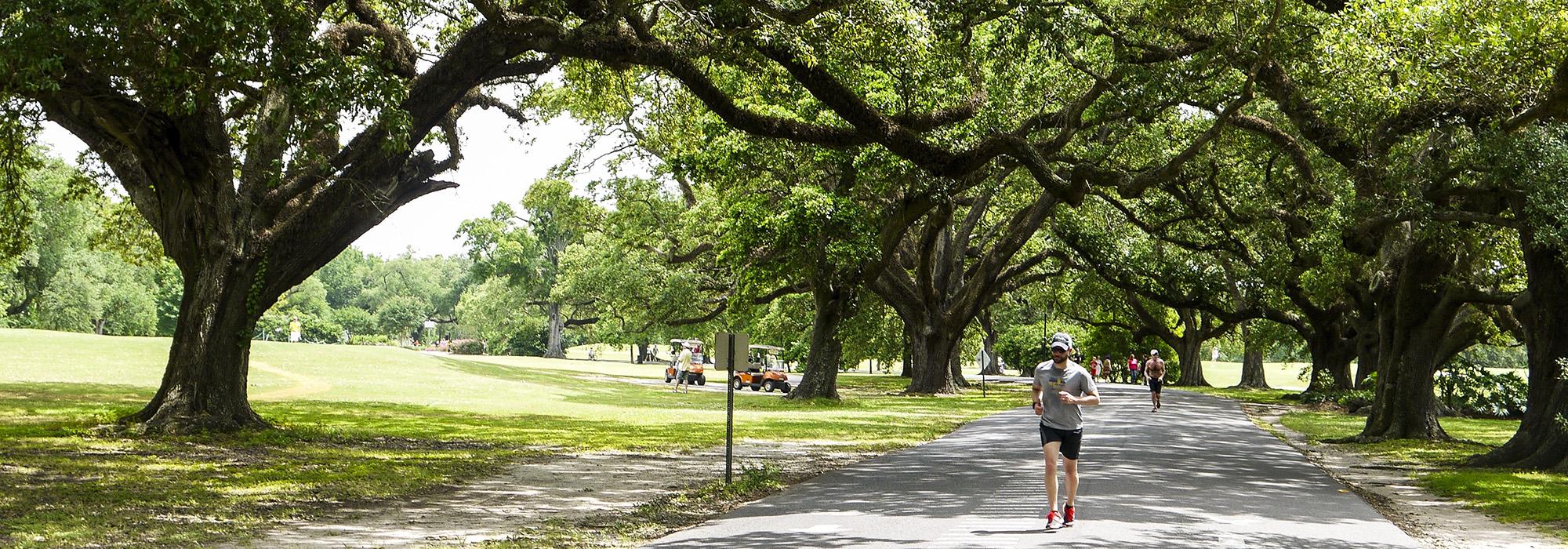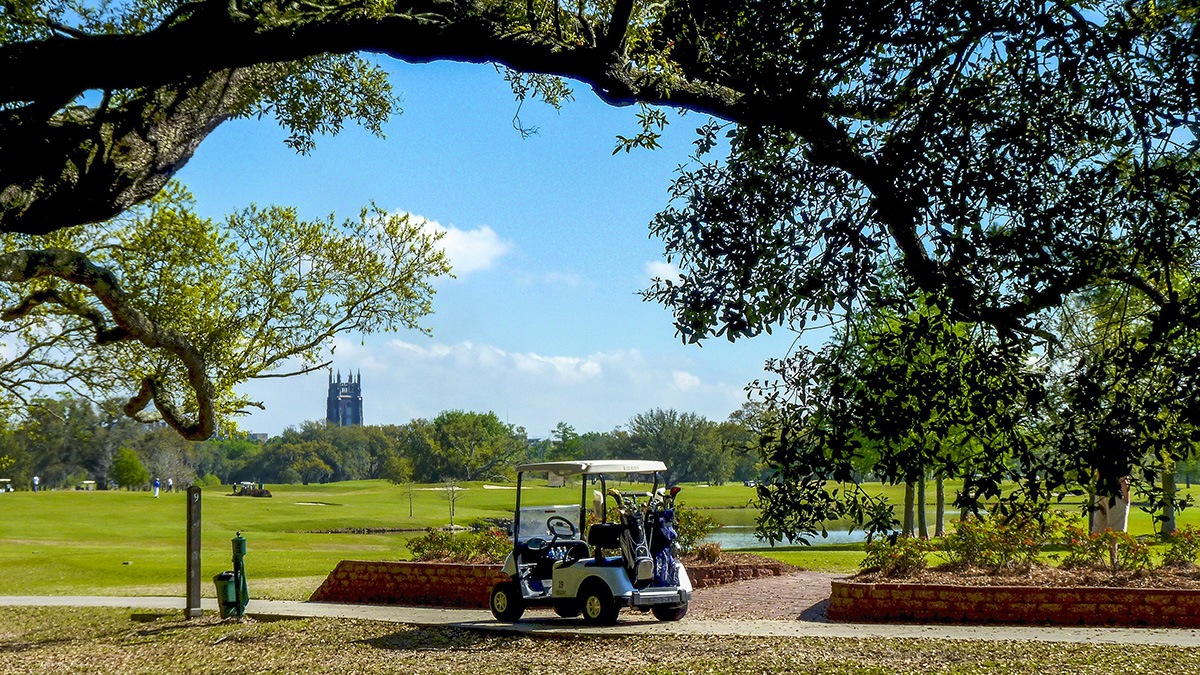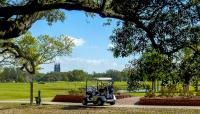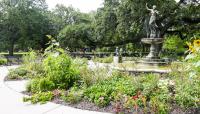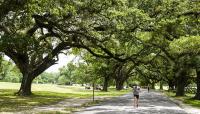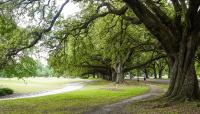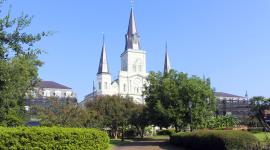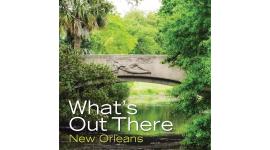Landscape Information
Purchased by the city for parkland in 1871, this former sugar plantation abutting the Mississippi River was renamed Audubon Park in 1886 to honor John James Audubon, who became a New Orleans resident in 1820. A Victorian-style conservatory, gardenesque flower beds and allées of live oaks were added to the park’s southwestern section when the park hosted the 1884 World’s Industrial and Cotton Centennial Exposition.
These elements were retained when John Charles Olmsted of Olmsted Brothers was hired in 1898 to transform the swampy divided flatland into a park. His design in 1902 echoed earlier Olmsted work on the Boston Fens, unifying the site and solving drainage problems by developing a varied watercourse, later called the lagoon, which was intended to meander through the two major sections of the park. On the northern half of the park, he used fill from the stream bed to grade the flat site into a rolling meadow, which quickly became an 18-hole golf course. His plan also incorporated numerous picnic shelters and diverse plantings, including live oaks along the stream banks and curving paths.
While the park’s current 340-acre configuration follows much of the Olmsted plan, the planting recommendations and the full watercourse were not implemented. A zoo was established in the early 20th century and developed more fully during the 1930s, with design advice from Olmsted Brothers and implemented under the Works Progress Administration. The park also includes a 1.8-mile pedestrian path, riding stables, and Ochsner Island, a prime birding spot.



